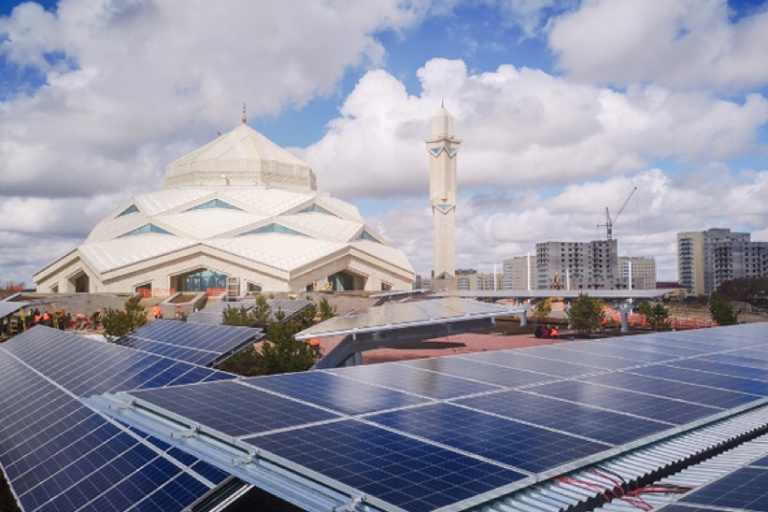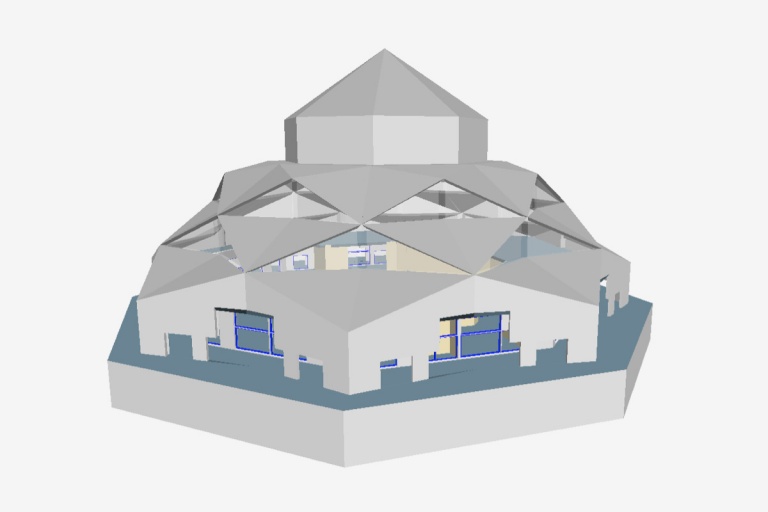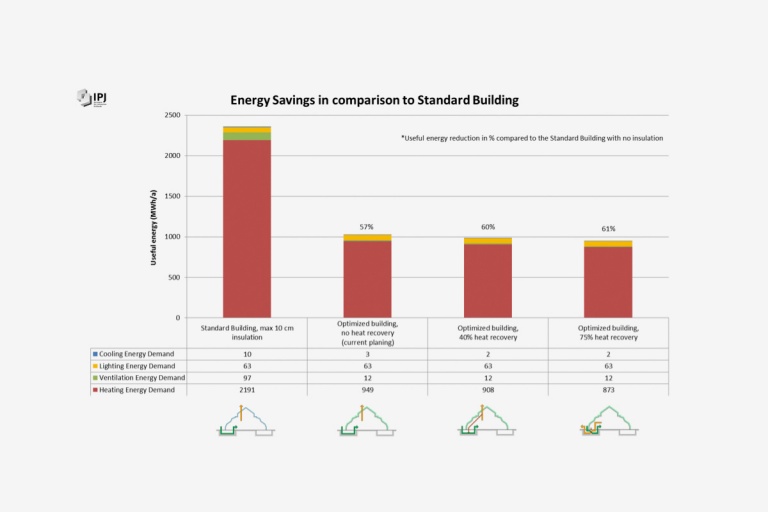Astana Mosque: a model of energy-efficiency
As the world’s first mosque, the Yryskeldi Qajy Ata Meshiti Mosque in the Kazakh city of Astana has a positive electricity balance during the year. Their heating energy requirements are about two-thirds lower than for comparable buildings.
The mosque is one of the first four buildings in the world to be awarded the „Austria Green Planet Building Award“ in May 2018. The prize, awarded by two Austrian ministries, in particular honours energy-efficient buildings that have been constructed or upgraded with the participation of Austrian designers.
For the optimisation of thermal energy in the construction of the Yryskeldi Qajy Ata Meshiti Mosque, completed in 2018, the Vienna office of „IPJ Ingenieurbüro P. Jung GmbH“ was responsible for the building simulation and the building services consulting, and developed the energy concept together with „NEUE BAUPHYSIK UND ENERGIEDESIGN GMBH – NEUBAU“ for the 4,000 square metre complex.
Extensive outdoor photovoltaic systems in the mosque include walkways and carports. They produce more electrical energy than is needed in the building. The demand for heating has been reduced to about one-third (35 percent) of what is normal in Kazakhstan through a clever combination of measures to increase energy efficiency. In addition to targeted thermal bridge optimisation, higher insulation standards also contribute – for this reason the mosque was equipped with quadruple glazing. „Das Leitwerk GmbH“ contributed to the planning and implementation of an efficient ventilation strategy with 75 percent heat recovery. The total investment cost for the energy system amounted to 400,000 euros.
(Architects: Spiritual Administration of Muslims of Kazakhstan / Client: Spiritual Administration of Muslims of Kazakhstan)






